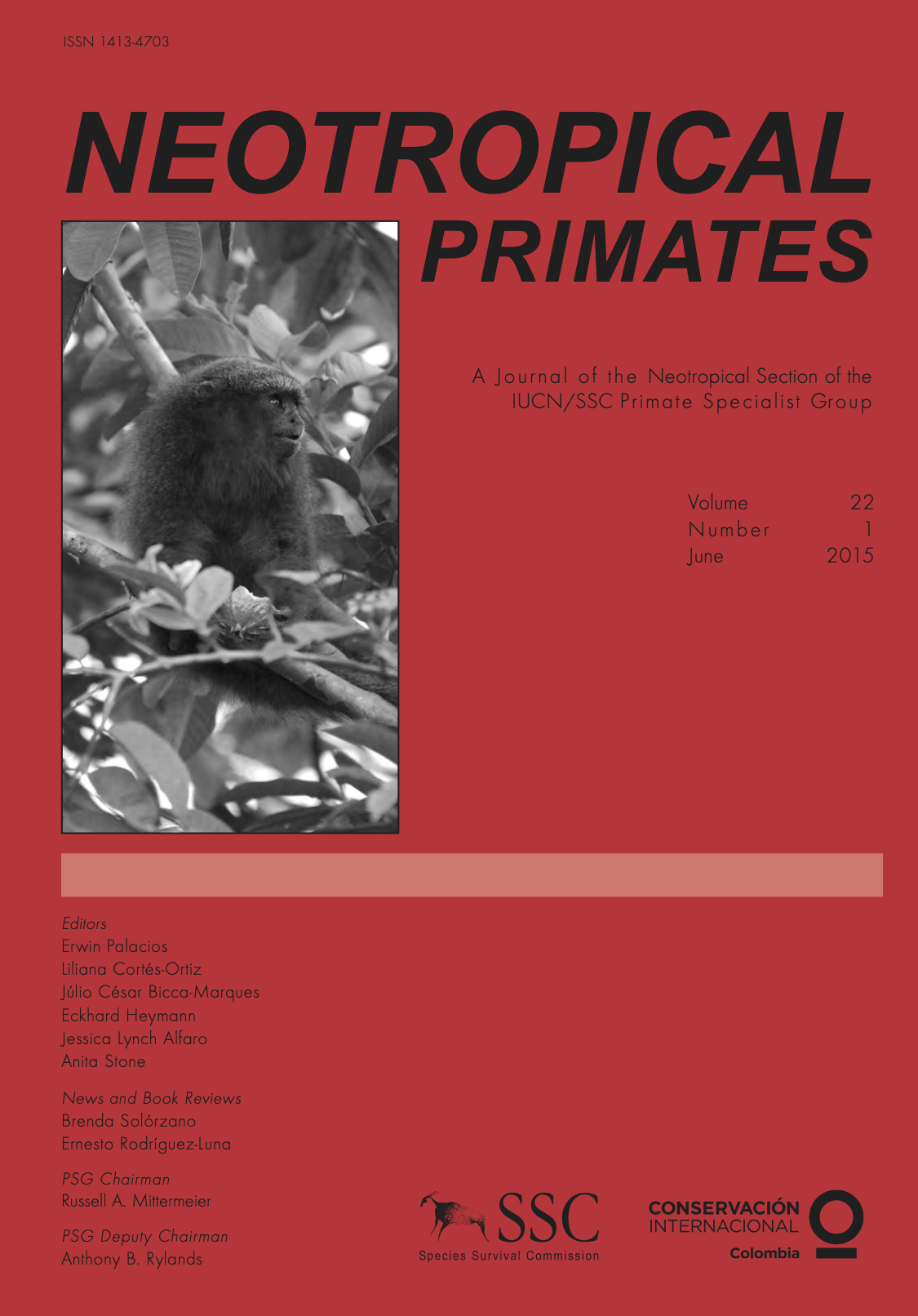GPS as an effective tool for study of the home range of black-and-gold howlers (Alouatta caraya) in riparian forests, southern Brazil
DOI:
https://doi.org/10.62015/np.2015.v22.148Keywords:
GIS, comparative methods, Neotropical primates, space useAbstract
The effectiveness of using Global Position Systems (GPS) to estimate primate home ranges in tropical forests has been questioned. The aim of this study was to test the efficacy of this tool by comparing quadrat methods with the help of a compass and tape measure (CT) and using GPS in estimating the size of the home range of two groups of Alouatta caraya; one group on a 1,050-ha, riparian-forest island, and the other on the mainland of the Upper Paraná River. They were monitored from October 2004 through September 2005, on two full days in each month per group, GPS readings (fixes) and tag marks were taken every 30 min. A 0.25-ha grid was used for the home range estimate. A home range of 4 ha was obtained for the island group by means of GPS, and 4.5 ha with CT. The mainland group used 14.75 ha, as estimated by both methods. However, some quadrats were incompatible in positioning between the methods in each environment. The annual and seasonal home ranges did not differ between the methods, showing that GPS was effective. The quadrats that were computed based on GPS and absent on CT indicated, however, a small error in the home range as defined by the GPS. Therefore, the greater the precision of the instrument when taking fixes, the better the result. The smaller the home range of the group, the more marked the error can become. For GPS to be even more effective in the study area or regions of similar vegetation, it is noted that the fixes should be taken at shorter intervals and the fixes should be taken with the best precision possible. We discuss the efficacy of the two methods as applied to studies of the spatial behavior of A. caraya in riparian environments.

Downloads
Published
Issue
Section
License

This work is licensed under a Creative Commons Attribution-NonCommercial-ShareAlike 4.0 International License.


